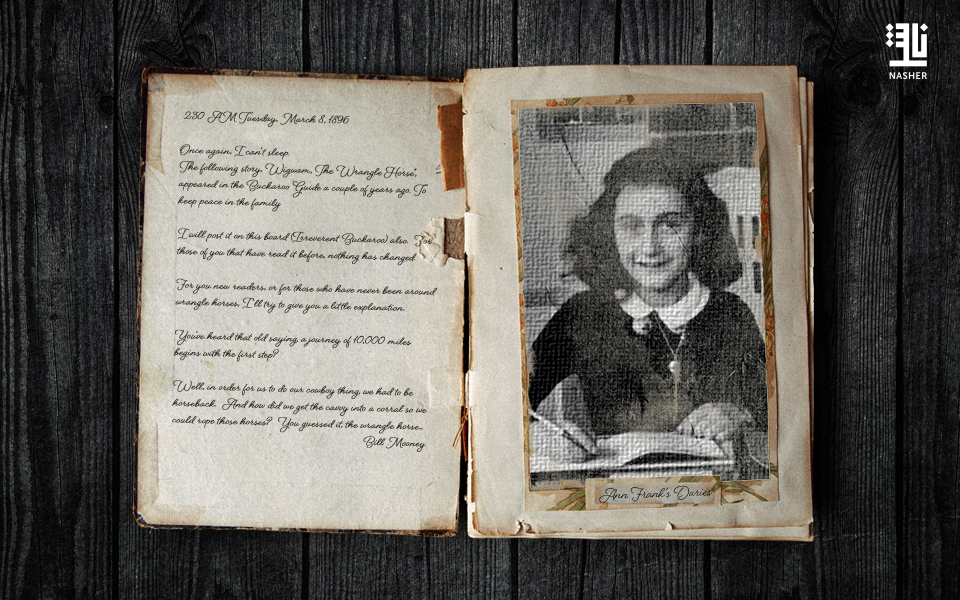Thirteen-year-old Anne Frank began keeping her now classic diary and a landmark in the world of literature on the 12th of June, 1942. She would spend a little more than two years confiding in its pages, sharing stories from daily life, observations, and hopes for the future from the cramped annex in Amsterdam she occupied with her family and several other Jews in hiding. The last entry in her diary is dated August 1, 1944, after which she was arrested and deported.
“I hope I will be able to confide everything to you, as I have never been able to confide in anyone, and I hope you will be a great source of comfort and support.” Anne Frank’s diary begins with these words. In 1947 the diary was published as a book by her father.
Born in Frankfurt in 1929, Anne Frank emigrated with her family to the Netherlands in 1933, when Adolf Hitler became chancellor of a crisis-ridden Germany. In 1942, as the authorities tracked down Jews in the Nazi-occupied Netherlands, the Frank family moved into the ‘annex’, a flat hidden behind a false bookcase, to escape the Gestapo.
In August 1944, the family was betrayed by an unknown individual, and the inhabitants of the annex were deported to Auschwitz. Afterwards, Anne and her sister were transferred to Bergen-Belsen. Anne died of typhus in February or March 1945, shortly after the death of her older sister Margot.
According to the Dutch professor Johannes Houwink ten Cate, from the Institute for War, Holocaust and Genocide Studies (NIOD) in Amsterdam, Anne Frank led the ordinary life of a middle-class Jewish teenage girl living in Amsterdam. Her family was relatively modest – her father was a businessman, but not a very successful one. She lived in the Rivierenbuurt (‘river district’), while the wealthier German Jews lived in the south of Amsterdam.
Anne Frank did not have a religious upbringing. She came from a liberal German-Jewish background whose liberal and humanist ideals deeply influenced her. This is part of the appeal of her diary – even in moments of crisis in the secret annex, she holds firm to her beliefs.
She was well-assimilated into society and not a very orthodox Jew. For instance, she writes about her dream of going to Hollywood and becoming a movie star.
During the Nazi occupation, many people in both Western and Eastern Europe started writing diaries to document their experiences – and to regain some form of control over their lives, which they had lost under the Nazis. This was also the case with Anne Frank. In her diary, she created an imaginary friend, Kitty, who was also her alter ego. Via her diary, she fought her feelings of isolation and loneliness. In the beginning, she wrote only for herself. Later on, she decided that her diary ought to be published and started rewriting it. In this way, she turned it into a work of literature and a coming-of-age story.
Anne Frank was an innocent child, an adolescent girl, therefore young readers will always be able to identify with her. As long as there are 13-year-olds, her diary will be read all around the world. Since 2011, there is even a Chinese translation.







